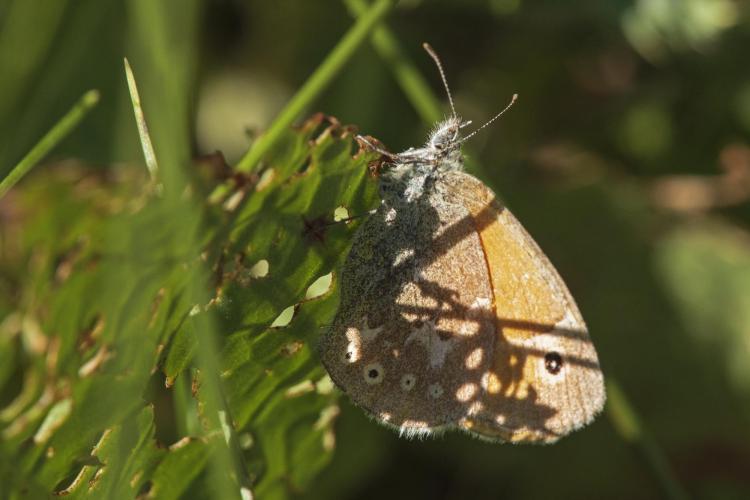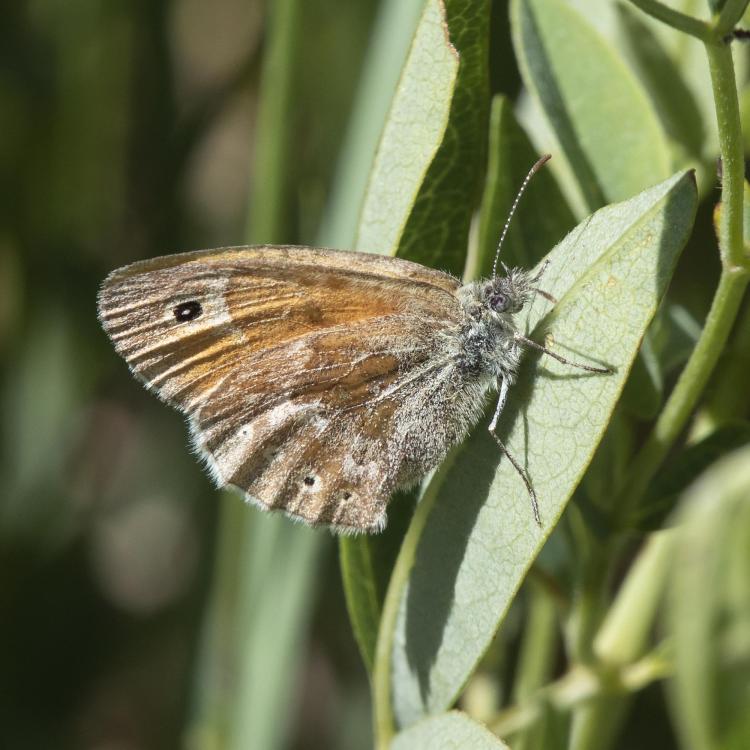The common ringlet's lessons on species boundaries
A minimum of 21 subspecies have been described, usually geographically separated but sometimes with geographic ranges sharing a border
Butterflies flitted among flowers beside South Boulder Creek, in Boulder's greenbelt near the town of Marshall. Common ringlets, Coenonympha tullia, had caught my attention, and I was stalking one, trying to get a good photo. It was an attractive butterfly, but an additional interest was generated by the thought that these ringlets looked slightly different ringlets that I had stalked years previously, on Marshall Pass, which crosses the Continental Divide south of Monarch Pass.
Common ringlets have a large geographic range, from Alaska to the Baja Peninsula along the west coast, and from Arizona to southern Canada along the Rocky Mountains. In southern Canada they extend east to New Brunwick and from New England south to Long Island. Imagine the environments that they live in--from marine saltmarshes to subalpine meadows, and from deserts in Mexico to deciduous forests in New England. Surely, they must be adapted to a variety of environments.
Common ringlets have a large geographic range, from Alaska to the Baja Peninsula along the west coast, and from Arizona to southern Canada along the Rocky Mountains."
A minimum of 21 subspecies have been described, usually geographically separated but sometimes with geographic ranges sharing a border. Subspecies are intended to recognize variations in color or pattern or size or behavior or physiology that are not quite of sufficient magnitude to justify species status. These differences might be attributed either to adaptation to different environments or to long term isolation that allows differences to accumulate by chance. Reproductive isolation sets the lineages free to follow independent evolutionary trajectories.
Perhaps the most familiar definition of a species, from Professor Ernst Mayr, is "species are groups of interbreeding natural populations that are reproductively isolated from other such groups." This definition is applicable to sexual species, but it does not apply to all species, and for many species it is difficult to determine who is mating with whom in natural populations.
Advances in genetics, and particularly the ability to examine thousands of genes in an individual, and to compare samples of from several populations, allow us to make inferences about the presence and the magnitude of gene flow (via migration and mating among populations). Two lines of studies, both involving common ringlets, illustrate how this is done and how the results can differ.

At the top of the page: A common ringlet foraging on whiplash daisy, taken near Marshall Pass. Above: A common ringlet foraging, taken near the town of Marshall. Photos by Jeff Mitton.
In California, Oregon and Nevada, a group of species is known as the "tullia group" -- each is very similar to the common ringlet, but differences have inspired biologists to name them as separate species. Furthermore, these species also have subspecies.

A common ringlet, taken near the town of Marshall. Photo by Jeff Mitton.
A study intended to test the validity of these species included samples from 21 populations, and 5 supspecies within 3 species of the tullia group. Genetic analyses found that each population contained high levels of genetic variation, meaning that many genes had 2 to 14 alleles, or multiple forms, analogous to the A, B, and O alleles at the ABO gene in humans. But the differences between populations were usually so small as to be insignificant. Only one subspecies was justified, for it was marginally differentiated from all others. But all the other subspecies as well as the three species were judged to be the same--no evidence of reproductive isolation was found. The authors recommended that the "tullia group" should be dropped, and all populations be recognized as common ringlets.
A similar series of studies into reproductive isolation in common ringlets was conducted on subspecies at the shore in New Brunswick. Two subspecies of common ringlets, the maritime ringlet, C. t. nipisiquit, and C. t. inornata (meaning unadorned) shared a common distributional boundary at the edge of salt marshes. C. t. nipisiquit has a tiny distribution, just 6 populations in salt marshes. C. t. inornata had a wider distribution, in meadows near salt marshes. These were parapatric subspecies, meaning that they occupied adjacent sites but never the same site.
Larvae of the maritime ringlet were occasionally inundated in salt water, a test that larvae of inornate ringlets never faced. Experimental studies of this difference showed that all of the maritime larvae survived 24 hours of immersion, whereas most of the inornate ringlets perished. Furthermore, the maritime ringlet's favored larval host plant is salt meadow cordgrass, Spartina patens, while the inornate larvae cannot survive on salt meadow cordgrass. The maritime ringlet's unique adaptations to salt marshes justified recognition of the maritime subspecies to species status.
A genetic test of reproductive isolation estimated that gene flow between maritime and inornate ringlets ceased 95,000 years ago, and also found resounding evidence that these were distinct species. The maritime ringlet now bears the name Coenonympha nipisiquit.
So now I am wondering about the common ringlets near the town of Marshall versus those on Marshall Pass, more than a mile higher. They appeared different to me. But ringlets have taught us that a definitive test for reproductive isolation is to compare the populations using genomic techniques.

